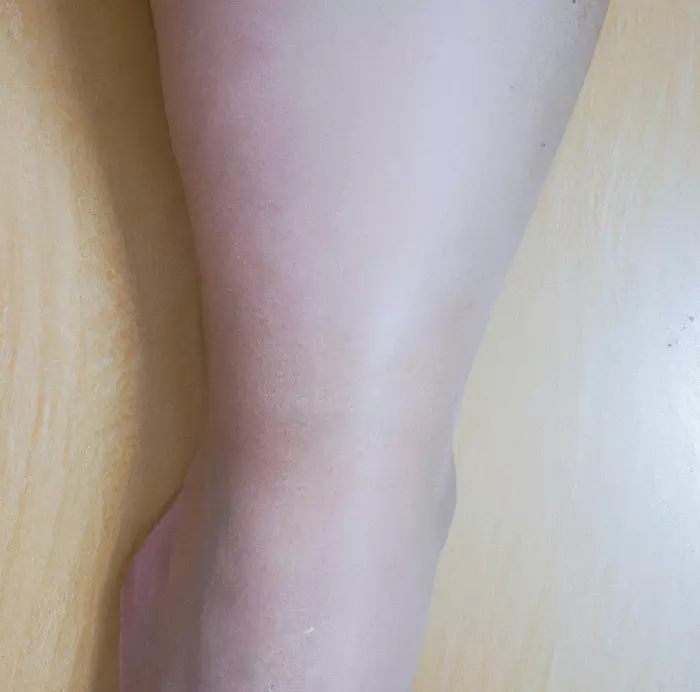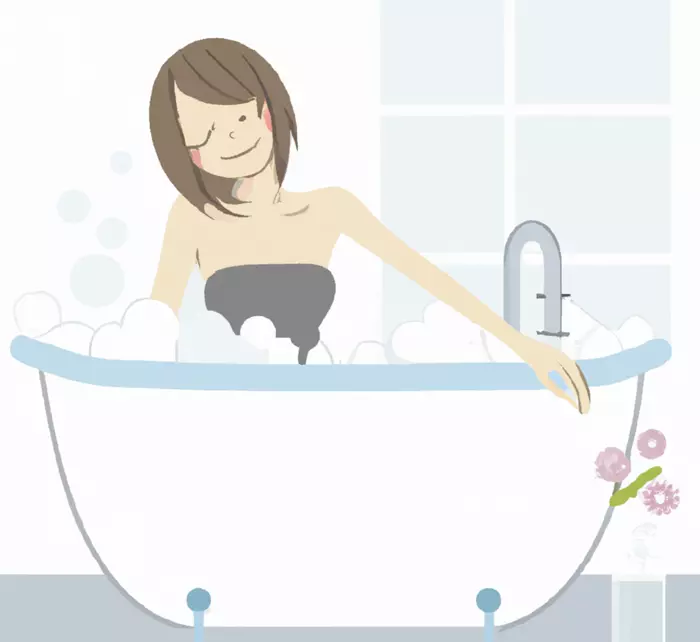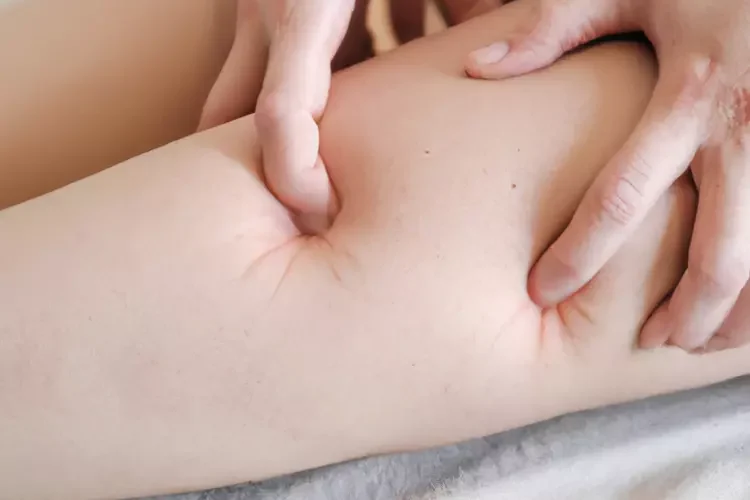Let’s begin this article by addressing a misconception. While many associate obesity primarily with poor nutrition and a sedentary lifestyle, the root cause for some might not be an excess of fat, but rather an accumulation of fluid in the subcutaneous adipose tissue. Essentially, many individuals appear overweight not due to fat but because of water retention.
Understanding Edema (Swelling)
At its core, edema is the retention of fluid in the intercellular spaces of limbs, internal organs, and skin. It’s externally evident in the puffiness seen around the face, eyes, fingers, ankles, and feet, making shoes suddenly feel too tight.
In advanced stages, edema can affect internal organs, pressing against surrounding structures, impeding circulation, and inducing discomfort. Limbs might become stiff, and breathlessness becomes a prominent symptom. One might feel a suffocating sensation, often accompanied by coughing and wheezing.
The challenge with treating edema is that the fluid, being trapped between cells, cannot simply be aspirated. Additionally, not all edema can be treated effectively with diuretics.
Interestingly, traditional diets often prove ineffective against edema-related weight. Consider this: two individuals go on a hunger strike. One might shed ten kilograms in two weeks, while the other might only lose two kilograms, despite both consuming negligible food. The latter’s retained weight isn’t fat, but water.
Simply put, you can’t eliminate fluid retention through dieting or fasting alone. The real root causes of edema delve deeper.
Types of Edema
Based on their location, edemas are generally categorized into two main types: generalized and localized.
Generalized Edema
As the name suggests, generalized edema affects the entire body. This condition arises when there’s an imbalance in the body’s fluid retention, resulting in the inability to excrete all excess fluid through urine. Generalized swelling can be caused by various factors, including heart failure, other cardiovascular diseases, skin conditions, liver issues, disorders of the gastrointestinal tract, diabetes, and thyroid gland problems. Another potential cause is reduced potassium intake.
Hypokalemia, or low potassium levels, can occur due to blindly adhering to strict diet rules, simultaneously taking multiple medications as prescribed during treatment, or chronic stress, which affects many. Additionally, excessive consumption of alcohol, salt, and caffeine-containing beverages can have a negative impact on potassium levels and contribute to edema.
Localized Edema
Localized edema refers to fluid retention specifically in vessels and various tissues. Skin may become swollen due to reasons such as pregnancy, tumors, injuries, inflammation, hormonal imbalances, or allergic reactions caused by individual intolerance to certain foods, beverages, medications, and more. Localized edemas can also occur from disrupted venous outflow and impaired lymphatic filtration.

A common instance is the swelling of the shin or calf and varicose vein expansion, conditions that phlebology might struggle to address. During and post-pregnancy, women may experience leg tissue swelling due to venous blockages from thrombi and vascular issues.
Additionally, localized edemas can result from conditions such as leukemia, flat feet, joint diseases, central nervous system disorders, paralysis, and other pathological diseases.
Localized edemas might start as isolated signs of internal issues (for instance, due to compromised permeability of lymphatic capillaries) and can eventually, as the disease progresses, become chronic. They may also be accompanied by pain and a sensation of heaviness from fluid retention.
Primary Causes of Edema
Many factors lead to fluid accumulation in the intercellular space. When faced with swelling, doctors with conventional medical views in clinics typically opt for one approach to address it: they treat the patient using potent medications that can negatively affect other aspects of one’s health. At times, this can even escalate to serious procedures, such as surgeries.
However, I believe that effectively combating tissue swelling can be achieved by making certain lifestyle changes. We’ll delve into that shortly.
I’d like to emphasize that the majority of edemas, like those in the calf, are not necessarily caused by chronic diseases, vascular problems, or elevated blood pressure. Instead, they often result from mere obesity due to the excessive amount of consumed food. Excess weight leads to swelling, swelling increases weight, and it becomes a vicious cycle!
Such a condition shouldn’t be addressed by starvation or various diet methods, nor by abruptly plunging into sports activities. I recommend a gradual weight loss by eliminating unhealthy food from your diet, coupled with a steady increase in aerobic exercise, which is often lacking in day-to-day life. Only this approach ensures reduced swelling without causing harm to internal organs.
Who Experiences Edema and How to Prevent Fluid Retention
Edema is most commonly found in women, a phenomenon often attributed to their unique hormonal profile. Progesterone, in particular, plays a key role in regulating fluid circulation in women.
Another high-risk group consists of the elderly. Medical professionals recognize that older individuals frequently experience swelling, particularly in the pelvic area and legs after prolonged periods of sitting or standing.
So, how can one prevent swelling? Often, the key lies in identifying the underlying cause of the condition and then addressing it. It’s essential to stay active and maintain a healthy weight.
Ignoring edema is not a wise approach to preserving one’s health. Any swelling, regardless of its location, serves as an alert to potential underlying issues related to body functions. This could relate to vascular problems or the excessive loss of protein, for example. I’d liken it to a litmus test that reveals hidden health issues in someone who might appear healthy at first glance.
How Can We Eliminate Excess Fluid from the Body?
The primary approach to combating edema is creating a comfortable living environment.
Imagine a starfish swimming in the ocean. Suddenly, a wave washes it ashore. There it lays, baking under the sun, unable to reach the water.

An ancient survival mechanism, developed long before humans walked the Earth, kicks in. When a living organism finds itself in an unfamiliar and uncomfortable environment, it risks death from dehydration and desiccation. To prevent this, the body begins to retain fluid.
The only way the stranded starfish can survive until the next tide is by conserving water. To do this, its kidneys and the collecting ducts of the kidneys that filter the blood plasma close up. When they shut down, filtration slows, diuresis reduces, and water starts recirculating within the body. As a result, its soft tissues swell. Similar processes occur in human urology.
You could say that while the starfish is stranded on the beach, it swells. This protective mechanism is inherent to every living creature on the planet.
We, with our edemas, are much like that starfish. Instead of the ocean, heat, or water deficit, we have stressful jobs, toxic colleagues, an unloved spouse, a challenging mother-in-law, and so on. In other words, we are often in very uncomfortable situations.
Advice: List out the three most unpleasant and uncomfortable situations in your life
How Can We Create a Comfortable Environment to Survive, Much Like the Starfish?
Identify and Address Unpleasant Situations: Begin by listing all distressing situations and consider solutions:
- Unhappy with family? Work on improving family relationships or consider distancing yourself.
- Discontented at work? Try to build better relationships at work or consider leaving.
- Concerns for your child? Help them with relationships at school or kindergarten, or contemplate a change, and so on.
Approaching the Issue: Essentially, you either address the problem by drastically changing the situation to make it more favorable, or you avoid the problems, leaving the discomfort zone and creating a new comfortable setting for yourself, thus reducing stress. It’s also worth trying to change your attitude towards the problem (but not through alcohol!).
Home Comfort Solution: I recommend using the most comfortable environment available to humans on Earth: surprisingly, it’s a salt bath with a 1% solution. Pour salt into a bathtub (1-3 kg of salt for an average-sized tub), mix, and then soak. This can yield positive results.

The longer you stay immersed in this beneficial setting, the more the collecting tubes of the kidneys open up (remember, there are about 4 million on each side). The more you open them, the better the blood plasma will filter, and the more actively water will be shed.
Soak as long as you like, and do it frequently. Ensure the water temperature is comfortable for you. No need for a thermometer – just use your hand to gauge. If it becomes too cold, add hot water, and if too hot, add cold water.
Feel free to bring a laptop, food, phone, a book, or just take a nap in the tub. Soon, you’ll see a positive outcome in the form of normalized fluid drainage without medication or surgical interventions. To monitor the effect, notice any reduction in excessive weight after several such procedures, or, more precisely, using a body impedance analyzer.
Diagnosis and Treatment
My approach is rooted deeply in understanding the processes that occur within the human body.
You can visit any clinic and consult with doctors practicing conventional medicine. More often than not, you might receive prescriptions for potent drugs, which can adversely affect your internal organs. An alternative is to proactively manage your health by adopting lifestyle changes. This method is gentler and can help alleviate edema and its associated diseases.
There can be numerous reasons for swelling, whether it occurs in the morning, evening, or throughout the day. Pinpointing the exact cause of fluid retention in the intercellular space can sometimes be challenging. Seeking medical advice might lead to prolonged and expensive diagnostic procedures. In most cases, this can result in wasted time, stress, and money. The primary, or more commonly, the prevalent reason for edema is an uncomfortable living environment. Symptoms like puffiness and swelling are the body’s way of signaling chronic stress and other conditions studied by neurology.
Of course, each case is unique. However, nature tends to standardize things. By observing numerous individuals, patterns emerge, allowing us to predict with high accuracy the underlying causes of edema.
Doctors rarely inform patients that most types of edema can be successfully treated with regular physical exercise. These exercise routines should emphasize aerobic activity. For instance, walking and swimming are low-intensity exercises that enhance oxygen saturation. Aerobic exercises stimulate the heart to beat faster, promoting better blood circulation, which in turn delivers oxygen throughout the body. Consequently, these exercises speed up bodily processes, leading to faster elimination of fluids from the intercellular space. While engaging in these exercises, it’s essential to limit unhealthy food intake to sustain the therapeutic effect without harming the heart, joints, etc.
I won’t convince you that there’s a one-size-fits-all method to quickly, painlessly, and permanently get rid of edema because there isn’t! But, to reiterate, edema most commonly arises from excessive weight and a lack of basic physical activity, affecting our vessels, veins, etc. Upon reducing weight, the swelling diminishes noticeably. This indicates its temporary nature. Thus, one can combat this swelling and the accompanying pain by adhering to a proper diet and physical activity regimen.
Enhancing Lymphatic Drainage
Let’s delve deeper into the topic of lymphatic congestion. All the fluid from cellular spaces enters the lymphatic system. This means that the lymphatic capillaries gather all the “waste” from the intercellular spaces. Similar to sewage pipes, this “waste” flows through them, passing through filters known as lymph nodes. After this, the lymph enters the circulatory system (the right and left venous angles) – specifically, the system of the superior vena cava.
Many individuals typically face issues related to this zone.
The zone can display:
- Congestion
- Compression
- Reduced mobility
- Muscle spasms
- Swelling
- A tightened diaphragm, which impacts lung movement (lacking a suction effect) among other symptoms.
To activate the internal drainage mechanism and facilitate the removal of excess fluid, it’s crucial to stimulate the lymphatic system and support its metabolic processes. The starting point should always be the chest region.
Many believe that if an arm is swollen, you should treat the arm; if a leg is swollen, focus on the leg. This is a misconception (or at least only partially correct). The primary focus should be the treatment of the chest area, followed by addressing peripheral issues.
This rationale is based on the understanding that if the lymphatic flow is blocked in the chest area, no matter how much you treat the arm, a normal outflow cannot be achieved. This is because the main “drainage collector” is obstructed.
A useful tip to remember is to spend one to two minutes, several times a day, massaging the entire sternum area and below the collarbones using vibrational movements.
There are various techniques to stimulate the chest region:
- Using your fingers
- Using your palm
- Employing a vibrational massager
The last method is the most convenient, irrespective of the specific type of vibrational massager you use.
To get a response from the chest lymphatic duct, it needs to be activated with vibration. Massage each point for about one minute in the following order: center, below one collarbone, and then below the other.
Afterward, if desired, you can continue the massage. For instance, if you’re concerned about your legs, you should proceed downwards and apply the same technique there. If you’re focusing on the arms, work your way from the center out to the periphery.
Another critical zone for proper lymphatic flow is the diaphragm. I’ve detailed how to address the diaphragm – including methods, reasons, angles of pressure, specific points to focus on, and potential reactions in the body – in the previous article.
In essence, I have two primary recommendations for improving lymphatic circulation and reducing swelling:
- Create a Positive Environment: Just like a starfish that lies upside down and is vulnerable to adverse conditions, you need to ensure your environment is beneficial to your well-being. Either change the unfavorable circumstances around you, create a comforting environment for yourself, or adjust your perspective towards it.
- Enhance Fluid Drainage: Instead of relying on licensed medications, focus on physical interventions to improve lymphatic drainage.
An additional technique to boost fluid drainage is whole-body vibration. Not just a localized part of the body, but the entire body. Engaging in activities like running, jumping, dancing, brisk walking, and cycling can be beneficial. For instance, you’d seldom see an overweight professional cyclist or a swollen runner or dancer. In essence, the more active movement and “shaking” we engage in, the better our lymphatic system functions. This is primarily because lymph flows better when our muscles are working. Engage in regular physical exercise — consistently and diligently.
The longer and more actively you engage, the better. To prevent swelling, the exercise should be aerobic. This means you shouldn’t overexert yourself in a gym to the point of injuring your ligaments and then spending hours recovering. Opt for longer durations of lighter exercise. For example, while watching a movie, walk on a treadmill, or cycle on an exercise bike. Or listen to an audiobook or a podcast, put your phone in your pocket, and go for a walk.
Start heeding this advice today. Begin progressing in the right direction. Don’t wait for a health issue like swelling to escalate. Ask yourself: why put off your health? Start today, and you’ll soon see the benefits. Your positive outcomes will motivate you even more, confirming these practices work.
Yes, it isn’t easy. We all have our lazy moments. But strive to do a little every day, gradually increasing your effort. Consistency breeds habit. Start today, and a year from now, you’ll be amazed at the transformation when you look in the mirror!
Disclaimer
The information provided in this article is for general informational purposes only. The content presented on this website should be considered solely as opinions and personal experiences. Read more
